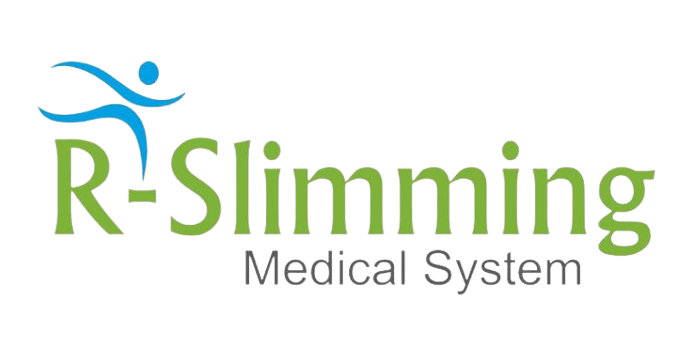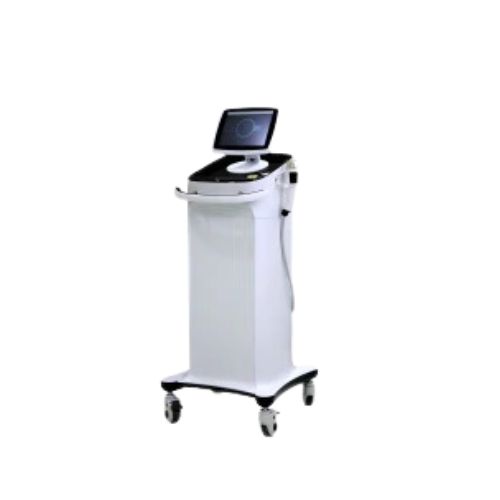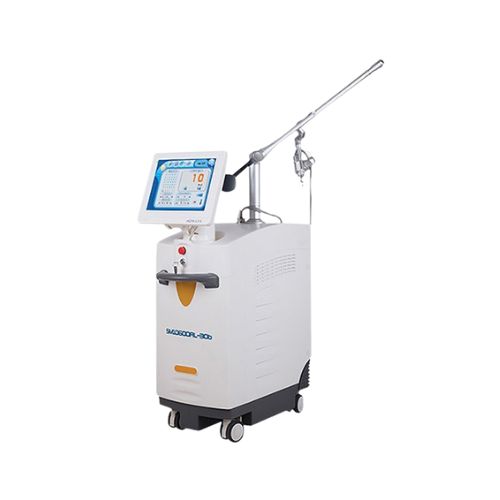- Home
- About Us
- Products
- Uses of Machine
- Hair Removal Treatment
- Acne Scars Treatment
- Body Contouring Treatment
- Body Shaping Treatment
- Vaginal Tightening Treatment
- Wrinkle Removal Treatment & Skin Tightening Treatment
- Skin Care Treatment
- Tattoo Removal and Pigmentation Treatment
- Excimer Vitiligo Treatments and PMU Treatments
- Skin / Hair Analysis Treatment
- Blog
- Contact Us

Acne Scar Treatment
Acne Scar Treatment
Scars and acne scars are common concerns for many patients, often arising after trauma to the skin. This trauma can be caused by various factors, such as injuries, surgeries, or severe acne. The body’s natural healing process involves repairing the wound, but this process can result in the formation of fibrotic tissue, which replaces the normal skin and forms a scar. The appearance and type of scar that develop can vary widely based on several factors.
Cause of Injury: Different types of trauma can lead to different kinds of scars. For instance, surgical scars often appear linear and well-defined, while scars from burns or severe acne might be more irregular and extensive.
Depth of the Wound: The depth and severity of the initial wound play a significant role in scar formation. Superficial wounds that only affect the outer layers of the skin (epidermis) may heal with minimal scarring, while deeper wounds that penetrate the dermis or subcutaneous layers are more likely to result in noticeable scars.
Location: The location of the wound on the body also impacts scar formation. Areas with thicker skin or those subjected to more tension, such as the chest or back, may develop more pronounced scars compared to areas with thinner skin, like the face.
Other Variables: Several other factors influence scar development, including the individual’s age, genetic predisposition, skin type, and overall health. Younger individuals tend to heal faster and may develop thicker scars, while older individuals may have thinner, less prominent scars. Additionally, people with darker skin tones may be more prone to hyperpigmentation or keloid formation.
Types of Scars:
Hypertrophic Scars: These are raised scars that remain within the boundaries of the original wound. They are often red and may improve over time.
Keloid Scars: Unlike hypertrophic scars, keloids extend beyond the original wound boundary. They can be itchy, painful, and may continue to grow over time.
Atrophic Scars: These are sunken scars that result from the loss of underlying fat or muscle. Acne scars often fall into this category, leading to pitted or depressed areas on the skin.
Contracture Scars: Typically resulting from burns, these scars cause the skin to tighten, which can restrict movement if they occur near joints.
Acne Scars: Specifically, acne scars can manifest in various forms, including icepick scars, boxcar scars, and rolling scars. Icepick scars are deep and narrow, while boxcar scars are wider with defined edges. Rolling scars have a wave-like appearance due to tethering of the skin.
Treatment Options: There are multiple treatment options available to address scars and acne scars, ranging from topical treatments and laser therapy to surgical interventions and injectable fillers. The choice of treatment depends on the type and severity of the scar, as well as the patient’s skin type and preferences.
The RSMS Solution for Acne Scar Treatment
RSMS’s scar removal solutions treat a wide range of scar types using an array of advanced technologies. The treatments replace compacted scar tissue with healthy new collagen, reducing or removing the appearance of scars with lower risk and less pain than surgical approaches, and with excellent clinical outcomes.
R-Slimming Solution for Acne Scar is an advanced treatment designed to address the challenges of acne scarring. This innovative solution combines cutting-edge technology and proven methodologies to effectively reduce the appearance of scars, promoting smoother, healthier skin. Acne scars, often a result of severe acne or improper healing, can significantly impact one’s self-esteem and confidence. R-Slimming Solution offers a comprehensive approach to treating these scars, enhancing skin texture and overall appearance.
Key Features of Acne Scar Treatment by R-Slimming machines:
Advanced Technology: R-Slimming Solution utilizes the latest advancements in skincare technology, including laser therapy, microneedling, and radiofrequency, to target and reduce acne scars effectively.
Customized Treatment Plans: Each patient receives a personalized treatment plan tailored to their unique skin type and the severity of their acne scars. This customization ensures optimal results and patient satisfaction.
Non-Invasive Procedures: The solution focuses on non-invasive or minimally invasive procedures, minimizing discomfort and downtime for patients. This approach allows individuals to resume their daily activities quickly.
Stimulates Collagen Production: The treatments promote collagen production, a vital component for skin repair and regeneration. Increased collagen levels help smooth out scars and improve skin elasticity.
Safe and Effective: R-Slimming Solution is designed with patient safety in mind. The procedures have been clinically tested and proven to be both safe and effective for reducing acne scars.
Multi-Modal Approach: The solution combines various Scar treatment modalities to address different types of acne scars, including atrophic, hypertrophic, and keloid scars. This comprehensive approach ensures that all aspects of scarring are treated.
Benefits for Acne Scar Treatment
- Improved Skin Texture: Patients can expect a noticeable improvement in the texture of their skin, with smoother and more even surfaces.
- Reduced Scar Visibility: The appearance of acne scars is significantly diminished, enhancing overall skin appearance.
- Boosted Confidence: Clearer, smoother skin can boost self-esteem and confidence, positively impacting social and professional interactions.
- Long-Lasting Results: The treatments offer long-lasting results, with ongoing improvements as collagen continues to rebuild and repair the skin.
- Minimal Downtime: Non-invasive treatments ensure minimal disruption to daily life, allowing patients to return to their routines swiftly.
Scar Treatment Process:
Consultation: The process begins with a thorough consultation to assess the patient’s skin condition and identify the types of acne scars present.
Customized Plan: Based on the assessment, a customized Acne Scar treatment plan is developed, incorporating the most suitable modalities for the patient’s needs.
Treatment Sessions: The patient undergoes a series of treatment sessions, each designed to target and reduce the appearance of scars. These sessions may include laser therapy, microneedling, radiofrequency, or a combination of these technologies.
Post-Treatment Care: Post Acne Scar treatment care is crucial for optimal results. Patients receive detailed instructions on how to care for their skin following each session to ensure the best possible outcome.
Follow-Up: Regular follow-up appointments are scheduled to monitor progress and make any necessary adjustments to the Scar treatment plan.
Conclusion of Acne Scar Treatment:
R-Slimming Solution for Acne Scar treatment is a comprehensive and effective approach to treating acne scars. By leveraging advanced technology and personalized treatment plans, it provides patients with a viable solution to improve their skin texture and appearance. With minimal downtime and long-lasting results, this solution is an excellent choice for individuals seeking to reduce the impact of acne scars on their lives.
Products Video
Before & After the Treatments













